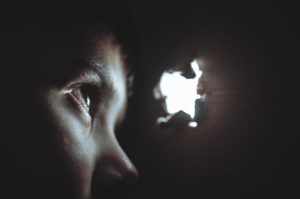Not only is sexual abuse traumatic for victims, but for parents, educators, and caregivers sexual abuse is their worst nightmare. Knowing that sexual perpetrators live in your neighborhood could, and should, be an eye-opener to any parent.
Taking advantage of the public records of local law enforcement is a good place to start to locate sexual perpetrators that live in your area. Below is a list of other characteristics of a sexual perpetrator, their behavior, and the victims of sexual abuse.
The Profile of a Sexual Offender
Sexual perpetrators come from all walks of life. In fact, they can look like anyone. They can be of young age or old, from a variety of ethnic backgrounds, and rich or poor. Inappropriate sexual behavior can be seen in children as young as eight. San Diego Christian Counseling can provide support and resources for those affected.
 Sex offenders identified as having a high risk of offense, or Level 3, can be children as young as ten. It is imperative to teach a child that if they ever sense something is wrong, regardless of how old the person, they should pay attention to their instincts and immediately cease contact with that person.
Sex offenders identified as having a high risk of offense, or Level 3, can be children as young as ten. It is imperative to teach a child that if they ever sense something is wrong, regardless of how old the person, they should pay attention to their instincts and immediately cease contact with that person.
Childhood Sexual Abuse: Know the Signs
It is important to pay attention to patterns in a child’s behavior to identify the presence of sexual abuse. Behavioral changes can often be attributed to sexual abuse. Children who have suffered from abuse will often manifest combinations of any of the following symptoms:
Becoming reserved and unnaturally quiet
If your child is normally chatty, and suddenly turns reserved, it is time to take notice of the reason for this change.
Heightened fear and apprehension
Among the most obvious signs that a child has been abused is fear. They can gradually become hyper-vigilant, continually on the alert for threats. As evening and the time for bed, this fear normally intensifies.
Victims of sexual abuse can be hyper-focused on making sure they feel safe and protected. They may possibly sleep with their backs to the door, or insist on checking to make sure that everything is locked up tight. They may also sleep with some sort of weapon next to them or under their pillow to defend themselves if necessary.
PTSD symptoms
Post-Traumatic Stress Disorder was first identified by professionals when war veterans returning from combat were undergoing overwhelming fear, panic, anxiety, and stress related to the trauma of combat. Abused children often display these exact symptoms and disturbances.
Heightened sensations of panic, anxiety, and stress are a few of the symptoms that victims of abuse can experience after the trauma occurs from various stimuli, caused by emotional “triggers”. Triggers include (but are not limited to) such things as sights, smells, movies, and songs, or people who resemble, behave like or remind them in some way of the offender.
Bad sleep, nightmares, flashbacks, and continual memories of the assault
Related to the above symptom, abused children will often have interrupted sleep or difficulty sleeping. Difficulty falling asleep and/or remaining asleep can leave them overly tired the following day. Bad dreams and fear of the dark are also common in those abused.
Flashbacks involving strong memories of the abuse can occur unexpectedly. The sexual assault can overwhelm their thoughts, making it hard to focus while at school or to feel motivated to do school work. These reoccurring thoughts can make it tough to think of anything else besides the abuse.
Depression
Children who have been the victims of sexual abuse can often show symptoms of depression. Additionally, they are (depending on the severity, frequency, and duration) more likely to experience suicidal thoughts and to make actual attempts at suicide.
Possible signs of abuse in teenagers and even older adolescents include wearing dark clothing, experimenting with cutting (and other forms of self-harm), and excessive amounts of piercings or tattoos.
Tearfulness, crying, detachment, or apathy
It is common for children who have endured trauma to be characterized by excessive crying and being easily moved to tears. Should the abuse continue for a long period of time, as the victim gets older they can develop the opposite of this behavior. Behaviors and attitudes can become more calloused and hardened.
Sexual abuse can make children appear to be emotionally deadened because the struggle with the unwanted sexual actions can simply hurt them too much emotionally. Children may detach emotionally as if someone else had experienced the abuse rather than them. This can lead to dissociative disorders developing later in life.
Aggravated aggression, hostility, and agitation
The abused child sees the world as an inherently hostile place. Lack of trust and frustration can lead the victim to develop explosive anger over the simplest things. Thoughts that others are intent on harming them, can leave the victim suspicious of everyone that they meet.
Because most sexual offenders are male, it’s common for victims of sexual abuse to react to most males with distrust and dislike. If both parents are still together in the home, the victim may become increasingly hostile or aggressive even to the non-abusive parent.
Children of abuse will develop grudges and sometimes hatred towards the non-abusing parent and other non-abusing caregivers out of the subconscious feeling that those individuals did not protect them from the sexual abuse. They may engage in fights, they may hit things, destroy others’ property, yell, and get into heated arguments.
Guilt, shame, hurt
 These sorts of feelings are normal for child victims of sexual abuse. They will often blame themselves for the sexual abuse and develop guilt and shame that is misplaced or inappropriate. Often these feelings will be instilled in them by the perpetrator, telling them that they bear responsibility for the perpetrator’s actions.
These sorts of feelings are normal for child victims of sexual abuse. They will often blame themselves for the sexual abuse and develop guilt and shame that is misplaced or inappropriate. Often these feelings will be instilled in them by the perpetrator, telling them that they bear responsibility for the perpetrator’s actions.
It can even happen that the perpetrator will blackmail the abused, threatening to hurt or tell someone important to them if they do not continue to be compliant. The perpetrator may try to rationalize the abuse and claim that the abused even enjoyed the actions they were subjected to, or even that it was the abused child’s idea.
In these situations, child victims may blame themselves for everything and for everyone else’s behavior.
Persistent enuresis and/or encopresis
Enuresis and encopresis are the inability to control urination or bowel movements. Bed-wetting or defecating in the bed (that are not related to normal potty-training issues) is seen in children (even among those who are teens) who either are currently, or have been abused sexually.
However, these aren’t sure signs, and one should not automatically assume that they indicated that a child is a sexual abuse victim. However, if seen in older children who are beyond the normal potty-training years that are experiencing this issue, a further medical inquiry is warranted.
Genital or anal pain or trouble swallowing
This sign should raise huge red flags, especially in the cases of young children, because it is a potential indicator of a recent abuse. If it is unexplained, a medical investigation is highly recommended.
Fear of closeness and intimacy
Children who have experienced abuse normally find it difficult to develop intimate relationships. Though they might be very extroverted, likable, friendly, and a lot of fun, they tend to be withdrawn emotionally and maintain a distance from others.
The child may think that doing so prevents them from coming to any future harm. Also, children that have experienced sexual abuse often struggle to accept intimacy or physical contact. Their dislike of such contact may lead them to divert attempts at affection or react strongly to innocent touch.
Excessive and irrational pursuit of touching, intimacy, or hugging
At the opposite end of the spectrum, the victim can be extremely clingy and crave physical affection. These kinds of victims display a poor understanding of both social and physical boundaries, struggling to distinguish between appropriate and inappropriate physical displays of affection.
They might wrongly assume that anyone offering them any kind of physical affection (event the appropriate kind) is really expressing romantic love to them, and so they may respond in turn with types of touch that are inappropriate.
Aversion to sex or sexual promiscuity
These two extremes are commonly seen in children and adults that are victims of sexual abuse. Teenage girls that have a history of sexual abuse are more prone to impulsive sexual encounters with males. The strong need for physical attention brings them to such encounters as a means of satisfying their need for affection in the only way that they know how.
In one study, more than half of women in the sex trade reported having experienced sexual abuse as a child. The opposite is often true, especially in males with a history of sexual abuse. These men may be repulsed by the idea of sex or any kind of physical affection. This struggle within males tends to lead to marital conflicts where sex and affection are desired by their spouse.
Sexual acting out
History of sexual abuse can surface in preschool children as they struggle with the social skills required for early development. It is very common to see inappropriate boundaries with others and substandard social skills with regard to inappropriate public behavior (i.e. exposing their bottom, touching a friend’s privates, etc.). Boys with a history of sexual abuse are noted to have higher displays of inappropriate sexual displays than girls.
Also, children that have been abused can display forward and even aggressive behavior with regard to sex. These children struggle with thoughts and actions motivated by power, control, and dominance over their victim, which can follow them into adulthood. Sexual acting out toward others, wherever noticed, requires immediate, careful investigation, confrontation, and correction.
Acting much older or younger
Children with a history of abuse may struggle with displaying social skills that are age-appropriate. They may have difficulties relating to other children their own age or they may socialize with or befriend much younger children.
They may behave in a way that is less mature than other kids their age. Older adolescents may still display an attachment to “blankies” or stuffed animals. Some teenagers may continue to suck their thumbs.
However, the opposite types of behavior may also be seen, in which victims act much older than their age, relate better to adults, and even carry on adult conversations. Girls even as young as six may try to dress like adult women (doing their nails, wearing makeup, etc.).
Advanced knowledge of sex
It is not difficult to imagine that a child of abuse can have considerable and precise knowledge about sex that is greater than that of their peers. If your child is of young and discloses to you that a peer has exact knowledge of sexual acts, it is time to intervene.
Disturbing types of play
In young victims of abuse, conflicts that they have experienced may be acted out in the form of play. If you notice a 5-year-old girl playing Barbie in such a way that Barbie and Ken are being inappropriate, it is time to notify the necessary professionals and to investigate the situation.
Disturbing types of creativity
 You will often see the ups and downs of children’s daily lives being expressed in the art that they create, such as in paintings or drawings. These sources of mental revelation are viewed as useful by therapists when counseling possible sexual abuse. As an adult, you should pay attention to:
You will often see the ups and downs of children’s daily lives being expressed in the art that they create, such as in paintings or drawings. These sources of mental revelation are viewed as useful by therapists when counseling possible sexual abuse. As an adult, you should pay attention to:
- Drawings, paintings, and sculptures
These creations may carry dark, aggressive, or disturbing themes
- Stories, songs, poems, social media, or journal entries
Older children, adolescents, and teens may write stories or poems, or compose songs that either refer to or clearly tell about what they have struggled with since the abuse. Social media accounts are a popular outlet for teenagers today in which to express their internal struggles in an attempt to seek help from someone that they can trust. Leaving these things where they can be found may not always be accidental.
- Disproportionately coarse sexualized language
The state of today’s culture makes this sign difficult to really identify. Children from the inner-city grow up in a culture that is radically different from those who grow up in, for example, an upper-class suburb. However, if your 5-year-old swears like a drunken sailor or uses language that indicates that he has been exposed to pornography, this should send up red flags.
Dramatic changes in appetite
Children and teenagers that have experienced sexual abuse can also struggle with their relationship to food. They may eat either too little or too much. It is possible for children who have been sexually abused to develop an eating disorder in response.
Behaviors such as starving themselves or binge eating and purging can be a result of distorted body image. On the other hand, they may eat too much as a way of coping with difficult emotions.
Issues of power and control
Kids who are the victims of sexual abuse commonly have issues related to both power and also to control. Since sexual abuse can leave a person feeling powerless and afraid, they may display an over-compliance with the other peoples’ demands, they may be non-assertive, and they may always try to put other people’s wants before their own. However, it’s also quite common for child sexual abuse victims to relentlessly fight for control and to argue with others frequently.
Evasiveness, dropping hints, seeking attention
Attention-seeking behaviors are quite common in older kids that have experienced sexual abuse. They may hint at previous abuse to friends or other adults with whom they have a strong relationship in order to test the waters before fully disclosing the abuse.
They want to be seen and noticed, but they can instantly flip the switch and turn evasive, elusive, and completely shut down. They can display secretive and/or manipulative in order to hold on to even a scrap of power or control in their lives, which they see as out of control.
Hygiene problems
Hygiene issues in children are another clue that, when taken with respect to the symptoms listed above, can hint at a history of sexual abuse. If a child is wearing clothes that are dirty, or their appearance is unkempt, or they constantly smell, this could be a personal preference.
However, children or teenagers dealing with sexual abuse may use this coping mechanism as a way to prevent themselves from being seen as desirable by the perpetrator, thus making them feel safe from the abuse.
Excessive socializing with a much older friend
Children having older friends is not always a sign of sexual abuse. However, it is important to note your child’s social interactions with older peers in person and online.
Although there are relationships with older friends or adults that can be innocent and positive for the growth of a child, they may not always be innocent. Whoever you are, you should remain vigilant and carefully assess whomever the children in your life are friends with, in order to prevent them being subjected to sexual abuse.
Receiving gifts, money, and/or possessing pornography
 Perpetrators of abuse may use such items to lure their victims into engaging in sexual acts with them. Children may not understand what may be happening to them and be influenced by the tactics of the abuser such that they come to believe that these kinds of activity are normal.
Perpetrators of abuse may use such items to lure their victims into engaging in sexual acts with them. Children may not understand what may be happening to them and be influenced by the tactics of the abuser such that they come to believe that these kinds of activity are normal.
Abusers hook their victims with pornography in order to make these sorts of sexual relations seem normal. They may even hope to get them addicted to the lifestyle.
Running away
The National Conference of State Legislatures reports that nearly 50% of runaway or homeless youth claim to have been abused sexually.
Gender rejection or confusion
Struggles with sexual identity confusion or rejection are products of sexual abuse that are not mentioned as frequently as the ones described above. However, it is not unheard of for young victims of sexual abuse be confused about their sexual identity.
Sexually abused girls may think of themselves as ugly, damaged or ruined. Sometimes they may see their beauty as something that has led to the abuse and may begin to view physical beauty as more of a curse.
As a result, they may cut their hair short, dye it unnatural colors, and begin to dress in unflattering or socially unacceptable ways. Also, they may see begin to resent their female identity as something that is threatening or weak, so they begin to adopt male qualities and behaviors.
Sexually abuse males, however, may start to question their manhood. Confusing (perhaps even pleasurable) physiological reactions during the abuse, they may wonder if they are homosexual. The way in which childhood sexual abuse affects the evolution of same-sex attraction has been noted by many.
In a study by the National Institutes of Health on sexual behavior, Roberts, Glymour, and Koenen (2013) found that there is a positive correlation between childhood sexual abuse and adult same-sex attractions. Homosexuals reported 1.6 to 4 times more occurrences of childhood physical and sexual abuse over that of heterosexuals.
If you notice any of these signs in any of the children in your life – report it immediately!. Call your local CPS Office or the National Child Abuse Hotline at 1-800-4-A-CHILD. For additional support, Counselors at San Diego Christian Counseling are also available to help.
References
Andrea L. Roberts, M. Maria Glymour, and Karestan C. Koenen. Does Maltreatment in Childhood Affect Sexual Orientation in Adulthood? Arch Sex Behav. 2013 Feb; 42(2): 161–171. Retrieved from https://www.ncbi.nlm.nih.gov/pmc/articles/PMC3535560/.
Photos
“White Van”, Courtesy of Drew Brown, Unsplash.com; CC0 License; “Hurt”, Courtesy of Dmitry Ratushny, Unsplash.com; CC0 License; “Coloring”, Courtesy of Aaron Burden, Unsplash.com; CC0 License; “Cash”, Courtesy of Vitaly Taranov, Unsplash.com; CC0 License


